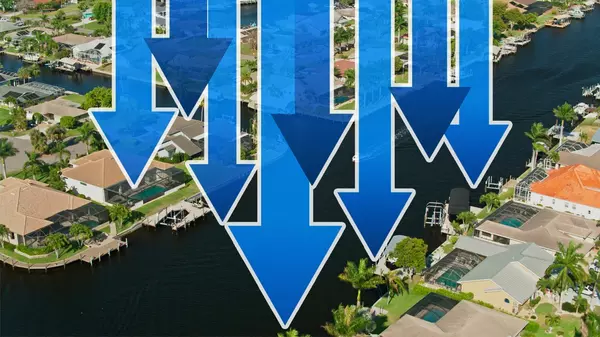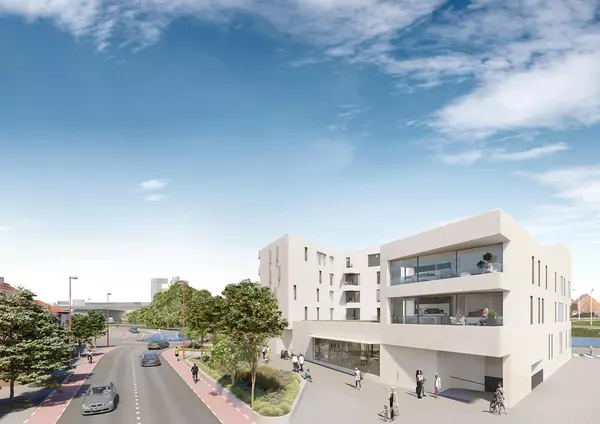The Rise of the Everyday Elevator in Homes

Once seen as a rare and novel luxury, the residential elevator is becoming a fixture in modern home design—even if it’s not yet installed.
While your house may not have a lift, it’s increasingly likely that it was designed with one in mind, and the potential for one is already baked into your blueprints.
It’s a shift that reflects a fast-approaching horizon: America’s population is getting older, and accessible features once considered a bonus—like an elevator—are becoming more essential to long-term comfort and independence.
“The older we get, it seems like those stairs seem to get steeper,” says Tim Fischer, CEO of Southeast Elevator.
Yet few homes are actually equipped to meet that demand. Only 10% of the current housing stock is estimated to be prepared for senior living, according to AARP.
In response, builders and architects are getting creative, designing homes that accommodate the unique needs of an aging population, or at least make it easier to add those features down the line.
Planning ahead: Why timing matters
It’s no coincidence that the adage “measure twice, cut once” comes from the construction world—redoing work is costly. The same rule applies to elevators: Adding one during a home’s design or renovation phase is far easier, cleaner, and more affordable than trying to squeeze it in later.
“From a practical standpoint, it is always smarter and more cost effective to add an elevator during construction or a renovation rather than after a home is finished,” says Nick Malinosky, a luxury real estate agent with Douglas Elliman.
When an elevator is planned from the start, the necessary shaft, electrical, and structural support can be built directly into the floor plan, saving homeowners from having to open walls, cut through floors, or reroute mechanical systems after the fact, he adds.
“It’s always easier, and often quite feasible, to put an elevator in new construction, as you can plan for it right from the start,” emphasizes Diana Melichar, owner of Melichar Architects. “Adding an elevator to an existing home has its challenges [like] finding a vertical space on multiple floors, renovating adjacent spaces to accommodate an elevator shaft, revising the structure as needed.”
That’s why simply designing for the possibility of an elevator upfront can be just as valuable.
“People are now spending a lot more time and effort planning and thinking about elevators, whether it is something that is needed today or down the road,” says Fischer.
“We always tell our builders, even if you're not gonna put the elevator in, prep the house. So that if a life event happens that the homeowner needs to add an elevator, it's much less of an intrusive project,” he adds.
Fischer advises builders to stack closets. “That's the easy way,” he says. “Put a closet over a closet. When the time comes that you want to add an elevator, there's your shaft.”
It's an easy and affordable method that allows homeowners to future-proof their layout without the immediate cost of installation.
That foresight can have a big financial payoff, too. Fischer estimates that it can mean the difference between paying roughly $10,000 in general contracting work to prep a home that’s been designed with an elevator in mind and $30,000 to $60,000 if the space wasn’t planned in advance.
What it takes: Cost, space, and structural requirements
But even if a home hasn’t been designed for an elevator, installing one isn’t as complicated or as spacious as many homeowners or builders assume. Most residential models require about 20 to 25 square feet per floor.
The cost, however, can vary widely depending on design, layout, and construction type.
For new builds, a standard two- or three-stop home elevator typically costs between $20,000 and $35,000, depending on the model and finish.
Retrofitting an existing home can push total costs significantly higher—often $45,000 to $80,000 once structural changes, wall openings, and mechanical rerouting are factored in, according to industry estimates from 101 Mobility and Lifton Home Lifts.
The type of elevator will also have a significant impact on the total cost and feel. Hydraulic, traction, and shaftless designs each have unique space and aesthetic considerations.
Hydraulic elevators, for example, offer a smooth and quiet ride but require additional space for a small machine room. Shaftless or pneumatic systems can fit into tighter footprints but tend to cost more per square foot.
You’ll need reinforced load-bearing walls, dedicated electrical connections, and a small recessed area known as the pit on the ground level, usually hidden beneath a removable closet floor in prepped homes.
The resale effect: Future-proofing for value
Beyond day-to-day convenience, a home elevator can also boost a property’s long-term appeal as accessibility and aging-in-place features become higher priorities for buyers.
“Home elevators are quite appealing for resale because a prospective buyer can imagine a sense of opportunity in that home,” says Melichar. “That opportunity comes in the ability to be flexible with who is living in your home, [whether it’s] yourself as you age, an aging parent, or you or a family member who has an injury.”
By making a home adaptable to multiple generations and mobility levels, an elevator can significantly expand the buyer pool—a major advantage in a competitive market.
“Buyers appreciate that level of thoughtfulness, whether it is about accessibility for family members, staff convenience, or simply imagining the home as a forever property,” says Malinosky.
Elevators project a sense of permanence, comfort, and care that resonates with today’s “forever home” mindset.
Future-ready homes start with design
Today’s homes are being built with tomorrow in mind, and that can offer a huge return for homeowners.
“An ounce of preparation on the front end can certainly help that homeowner on the back end,” emphasizes Fischer.
By integrating accessibility early—whether as a visible design feature or a hidden, elevator-ready space—architects and builders are laying the groundwork for generations of homeowners to be able to comfortably age in place. And with 75% of older adults reporting wanting to be able to stay in their homes as they age, according to AARP, that may become the most valuable home feature.
As Melichar puts it, “Careful and thoughtful planning by an architect can make a home elevator a valuable benefit.”
Categories
Recent Posts









"My job is to find and attract mastery-based agents to the office, protect the culture, and make sure everyone is happy! "
